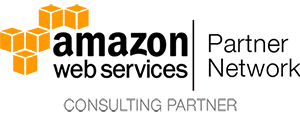Media monitoring services
10x Faster
With AI
Media monitoring services
10x Faster With AI


AI-Driven Data Extraction
Real-time Data Updates
Seamless Data Integration
High-Level Accuracy
Anti-Blocking Mechanisms
Customizable Extraction Rules
NO SET-UP COST
NO INFRA COST
NO CODING
4X
Rapid increase of your wealth
30%
Decrease your expenses wisely
1M+
Trusted regular active users
USED BY



Stay Ahead of Your Competition by Knowing the Latest Updates in World with Our Media Monitoring Services
In the ever-evolving media landscape, staying updated with the latest news and information is a significant challenge. Media sources are diverse, ranging from social media and online news to traditional outlets. It’s essential for both businesses and individuals to remain informed about discussions related to them. This is where Outsource BigData‘s media monitoring services come into play.
Our media monitoring services serve as your personal media watchdog. We’ve assembled a team of experts equipped with the latest technology to diligently track media content from various sources. We filter out the noise, delivering only the essential information, enabling you to make more informed decisions.
We not only offer data collection but also revolve around making data actionable for you. We assist you in identifying emerging trends, monitoring your competitors, and evaluating the effectiveness of your marketing and PR campaigns. It doesn’t matter if you’re a large corporation, a nonprofit organization, a government agency, or a small business – we have services tailored to meet your specific requirements.
In a world where information equates to power, media monitoring companies like Outsource BigData provide you with the necessary tools to maintain control and make intelligent decisions.
What is Media Monitoring?
Media monitoring involves the systematic tracking, collection, and analysis of diverse media content, such as news articles, social media posts, TV broadcasts, radio segments, and online publications. The goal is to closely observe discussions, reports, and conversations in the media related to a specific subject, brand, company, individual, or industry. This practice aids organizations and individuals in staying updated about public opinion, emerging trends, competitor actions, and other pertinent information that can influence their reputation, marketing approaches, and decision-making.
Working of Media Monitoring
Media monitoring software uses machine learning tactics to continuously crawl and index sites such as Twitter, Reddit, and others.
The media monitoring software work as below:
Define Your Goals for Monitoring
Before you plunge into the realm of media monitoring platforms, you must have a clear vision of what you want to accomplish. Begin by considering what precise data will best serve your objectives. Do you want to monitor your brand’s reputation, evaluate the effectiveness of your competitors’ marketing activities, or remain current on industry trends?
Defining your objectives is like entering coordinates into your navigation system. It ensures that you’re on the proper track and makes the journey more efficient.
Set up Your Project
The media monitoring method involves tracking public mentions using chosen keywords, focusing on social media, to gather valuable information.
Consider the below keywords:
- Your brand name
- Name of your product or service
- Your brand hashtags
- Thematic hashtags or relevant keywords
- Your CEO’s and other significant team members’ first and last names
Selecting the right keywords ensures a precise and precise data collection, offering a clearer and more focused view of the media environment.
Set the Right Keywords and Ignore the Irrelevant Ones
To effectively utilize media monitoring, it’s crucial to limit the number of words and phrases tracked to avoid overwhelming the system with too much information.Choosing the wrong keywords can result in irrelevant data and missed opportunities for thorough analysis, as it’s crucial to track enough phrases for accurate results.
To select the right keywords, focus on popular industry terms, use related keywords to refine results, generate multiple ideas, and consider notifications in every language globally, or narrow your searches to exclude irrelevant results.
Collect and Analyze Results
Media monitoring programs operate similarly to digital detectives, scouring the internet for publicly accessible content on websites and social media platforms. They accomplish this by gaining access to these platforms’ APIs (Application Programming Interfaces), which act as secret keys to their data.
True magic, however, happens during the analyzing phase. This is when these tools come in handy. They turn the raw data they’ve collected into something relevant and actionable. They act as interpreters for the wide language of online content.
When the analysis is finished, the tools display the findings in an easy-to-understand and actionable style. This could include reports, infographics, or warnings, all of which are intended to assist you in making educated decisions.
Automated Media Monitoring for Valuable Insights in Real Time
AI has the potential to play a significant role in media monitoring, which entails tracking and analyzing various forms of media, such as news articles, social media posts, and broadcast content, to identify trends, patterns, and sentiment.
Some of the ways AI can help with media monitoring are as follows:
Automated Data Collection
AI can assist in the collection of large amounts of data from various sources, such as social media platforms, news websites, and blogs, making it easier to track and analyze media coverage.
Sentiment Analysis
AI can analyze the tone and sentiment of media coverage using natural language processing (NLP) techniques, allowing organizations to understand public opinion and sentiment around specific topics or brands.
Topic Modelling
Artificial intelligence (AI) can identify and categorize various topics and themes in media coverage, allowing organizations to track trends and identify emerging issues.
Image and Video Analysis
AI can detect logos, faces, and other relevant features in images and videos. This makes it easier to monitor brand visibility and understand how organizations portray in visual media.
Predictive Analytics
AI can analyze historical data using machine learning algorithms to identify patterns that can help predict future media trends and behaviors.
Types of Media Monitoring Based on Types of Media
Media monitoring services can also be categorized based on the type of media they cover:

Digital Media Monitoring
Today, social listening, online tracking of social mentions, and sentiment analysis have largely replaced press clippings and broadcast recordings. Everything from online news to review sites, quickly and easily trackable in this real-time media monitoring landscape.
Traditional Media Monitoring
Despite the seemingly unimaginable existence of a pre-Internet era, businesses still value public feedback through traditional monitoring methods such as:
- Print tracking (Newspapers and magazines)
- Observation of broadcasts (Radio and television stations)
Social Media Monitoring
Without a doubt, social media is the focus of the majority of digital monitoring efforts today. It makes sense, however, given that the audiences share the majority of user-generated content via platforms such as Twitter, Facebook, Instagram, and TikTok. Nevertheless, these aren’t the only platforms to keep an eye on.
Intelligence Media Monitoring
AI-powered Intelligence Media Monitoring collects, analyzes, and presents insights from various media outlets, enabling businesses to make informed decisions and maintain a competitive edge.
How Outsourcing Media Monitoring Helps Businesses?
Businesses can benefit much from outsourcing media monitoring. Here are a few examples of how it might help:
1. Efficient Tracking and Analysis: Media monitoring companies have the skills and technology to track and analyze massive amounts of media content. They can provide insights faster and more correctly than an in-house staff.
2. Cost Savings: Developing and maintaining an in-house media monitoring system is generally more expensive than outsourcing. Media monitoring companies provide scalable, cost-effective solutions.
3. Focus on Core Activities: Rather than devoting resources to monitoring activities, outsourcing media monitoring allows your team to focus on core company processes, strategic decision-making, and other critical responsibilities.
4. Specialized Expertise: Media monitoring companies are experts in their sector. They are familiar with the complexities of numerous media channels and can provide useful insights and analyses that would be difficult to obtain in-house.
5. Broad Coverage: Outsourced services have access to a wide range of sources, including those that are expensive or difficult to get. This ensures thorough coverage and the capacity to acquire important content from a variety of channels.
6. Global Reach: If your company operates on a global scale or in numerous languages, media monitoring companies have the resources and language knowledge to give a greater range of content, ensuring you don’t miss out on key insights.
Preferred Partner for High Growth Company - Scrape Data Easily Without Coding
Scraping data from websites no longer requires coding expertise. With AI-driven web scraping tools, you can effortlessly extract valuable information from the web. Our AI data scraper offers can easy-to-use interface for all users.

Benefits of Media Monitoring
Social listening services enable businesses to leverage internet users’ experiences, ideas, and product recommendations to create valuable content and influence brand perception.
Online businesses face both opportunities and challenges in reaching consumers, managing perception, and winning trust. Real-time media monitoring helps stay informed about audience views, customers, industry media, and competitors. In the information age, businesses must be aware of important business mentions. Here are some benefits of media monitoring for your business:

1. Monitor Brand Reputation
Bad news can quickly spread online, damaging your reputation. Monitoring media coverage can help protect your brand. Media monitoring services can identify potential crises and mitigate their negative effects. By receiving real-time mentions, you can respond promptly and control the narrative surrounding your brand, becoming an active participant in your online presence.
4. Understand Your Target Audience
The primary objective is to provide exceptional service to your target audience, outperforming competitors, by engaging in online dialogues, identifying client issues, and enhancing communication through media monitoring.
2. Analyze Your Competitors
Taking the time to research your main competitors is one of the advantages of monitoring multiple media outlets. Comparing your competitors’ social share of voice levels to your own can help you understand your current market positioning. Competitor analysis involves examining not only the opinions of your competitors but also their own marketing strategies and media content.
5. Risk Mitigation
Hiring a media monitoring services provider can centralize workload by monitoring supplier mentions, legislative changes, and competitor perceptions, thereby reducing the responsibility of multiple internal departments in mitigating potential risks in business.
3. Measure the Results of Campaigns
Tracking marketing campaign outcomes is crucial for identifying successful strategies, improving communication, and understanding audience resonance, using online conversations and media monitoring services to track campaign reach and sentiment.
Role of a Media Monitoring Expert
A media monitoring specialist is in charge of establishing your brand’s goals and monitoring strategy, tracking data, measuring results and creating reports. Additionally, he is also responsible for communicating them to higher management for future business decisions.
A media monitoring expert should be familiar with online marketing and digital strategy. A strong background in social media would be extremely beneficial. Furthermore, some SEO knowledge will aid in the process of developing more complex analyses as well as new marketing and content ideas for website growth.
The person in charge should understand how brand monitoring works and be intimately familiar with the brand/company. This is required in order to extract data, generate new marketing and business ideas, and forecast the company’s future.
A person with excellent communication skills, as well as outgoing and problem-solving abilities, will be useful in online conversations for providing support, resolving negative feedback, and avoiding any negative reputation issues.

Challenges of Media Monitoring
1. Overload of Information
Firms face challenges in media monitoring due to the overwhelming amount of information available. To avoid missing important insights, set clear goals, focus on media relevant to business or target audience, and use filtering and organizational tools.
2. Inaccurate Results
Companies face issues with receiving incorrect or unrelated results due to media monitoring systems, broad search keywords, and slang on social media. To address this, businesses can include specialized keywords, refine filters, and supplement automatic solutions with manual monitoring efforts.
3. Multilingual Monitoring
Businesses need to monitor media in multiple languages to reach customers worldwide. However, not all tools are suitable for this task, leading to missed opportunities. To overcome this, companies can use specialized tools or collaborate with language experts. Tweaking search terms and filters can ensure important mentions are captured regardless of language.
4. Time and Resources Investment
Many businesses struggle with media monitoring due to time and resource constraints. Automated solutions can save time and simplify tasks, allowing businesses to focus on critical platforms and content categories. Outsourcing media monitoring activities can also provide a hassle-free solution.
Future of Media Monitoring
Advances in technology and changes in how people consume and interact with media will most likely shape the future of media monitoring. Here are some potential developments to keep an eye on:
1. Greater Use of AI
As AI advances, we can expect to see more advanced applications of machine learning and natural language processing in media monitoring, allowing organizations to track and analyze media coverage more accurately and efficiently.
2. Integration with Social Media
As the popularity of social media grows, media monitoring tools will need to adapt to include data from a broader range of social media platforms, such as TikTok and Clubhouse.
3. Emphasis on Visual Media
Media monitoring software must enhance their ability to analyze visual media, including recognizing logos and faces, due to the growing prevalence of images and video content.
4. Greater Emphasis on Ethics
As media monitoring becomes more sophisticated, there will be a greater emphasis on ethical considerations such as data privacy and responsible data use.
5. Integration with other business functions
Media monitoring will be seen as an increasingly important part of broader business strategies, with integration of tools with marketing, public relations, and customer service.

Our Technology Partners






Preferred Partner for High Growth Company
Our 12+ years of experience in price scraping and adaption of the latest algorithms such as Artificial Intelligence, Machine Learning and deep learning for catering the needs of retailers makes us the preferred partner for a high growth company.
%
Customer satisfaction
Years Of Experience
Projects Delivered
Happy Clients & Growing
Quality, Security and Privacy Compliance





